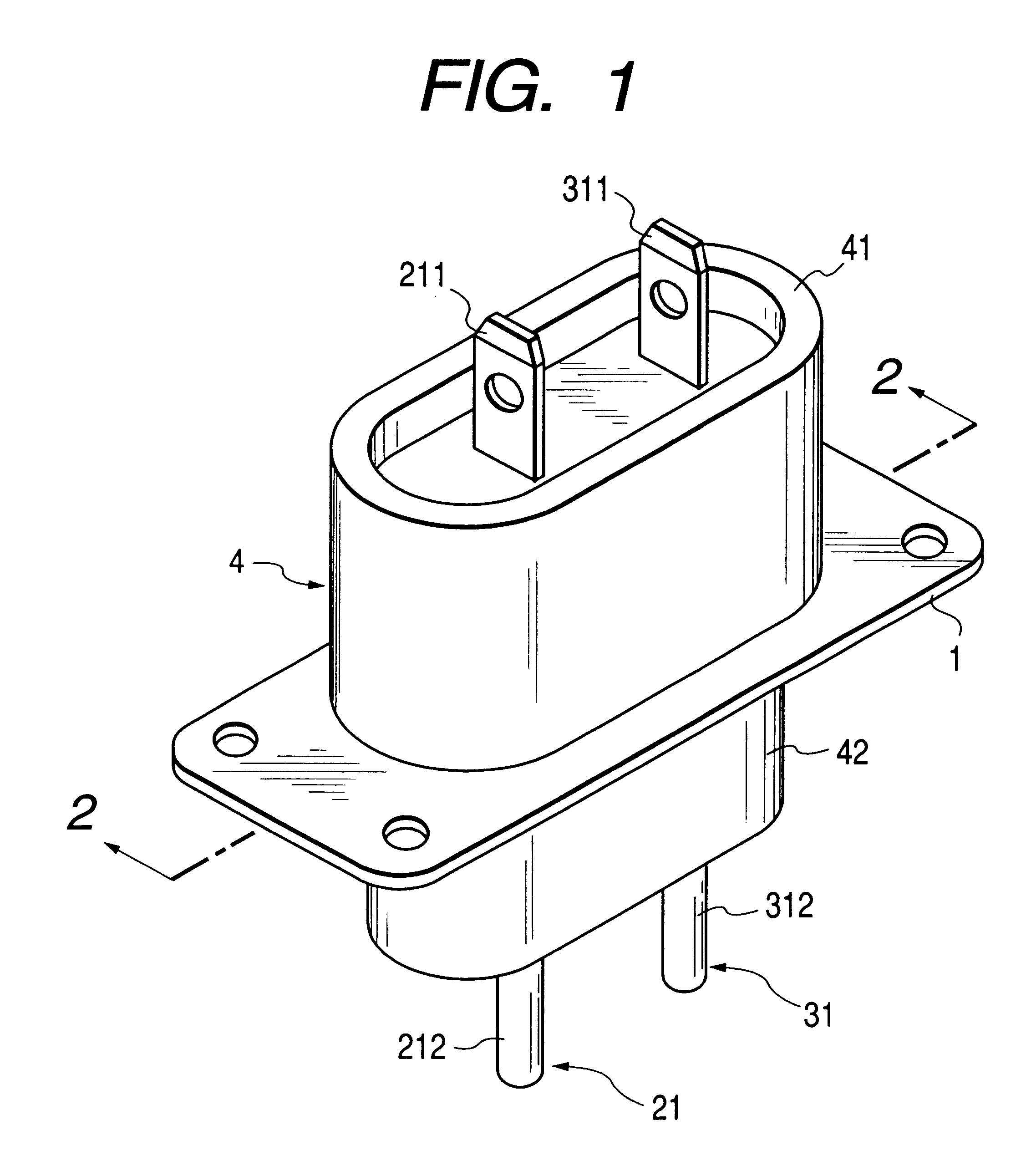High-voltage feedthrough capacitor
a high-voltage feed-through capacitor and capacitor technology, applied in the direction of feed-through capacitors, fixed capacitor details, transit-tube leading-in arrangements, etc., can solve the problems of voltage feed-through capacitor and cannot be increased, the area of the electrodes is influenced by the shape, and it is difficult to secure a high capacitan
- Summary
- Abstract
- Description
- Claims
- Application Information
AI Technical Summary
Benefits of technology
Problems solved by technology
Method used
Image
Examples
Embodiment Construction
Preferred embodiment according to the present invention will be described as follows referring to the accompanying drawings.
FIG. 1 is a perspective view of a high-voltage feedthrough capacitor according to the present invention. FIG. 2 is a sectional view taken on the line 2--2 of FIG. 1. The high-voltage feedthrough capacitor shown has a grounding member 1, two feedthrough capacitors 2, 31 and an armoring insulator 4. The grounding member 1 has two through-holes 11, 12 spaced away from each other.
The feedthrough capacitor 2 includes one central conductor 21, a dielectric layer 22, and an electrode 23. The periphery of the central conductor 21 is covered with the dielectric layer 22, and the surface of the dielectric layer 22 is covered with the electrode 23. The feedthrough capacitor 2 extends through the through-hole 11, and is fitted to the grounding member 1. The electrode 23 of the capacitor 2 is bonded to the grounding member 1 by means of, e.g., soldering or contact bonding o...
PUM
 Login to View More
Login to View More Abstract
Description
Claims
Application Information
 Login to View More
Login to View More - R&D
- Intellectual Property
- Life Sciences
- Materials
- Tech Scout
- Unparalleled Data Quality
- Higher Quality Content
- 60% Fewer Hallucinations
Browse by: Latest US Patents, China's latest patents, Technical Efficacy Thesaurus, Application Domain, Technology Topic, Popular Technical Reports.
© 2025 PatSnap. All rights reserved.Legal|Privacy policy|Modern Slavery Act Transparency Statement|Sitemap|About US| Contact US: help@patsnap.com



